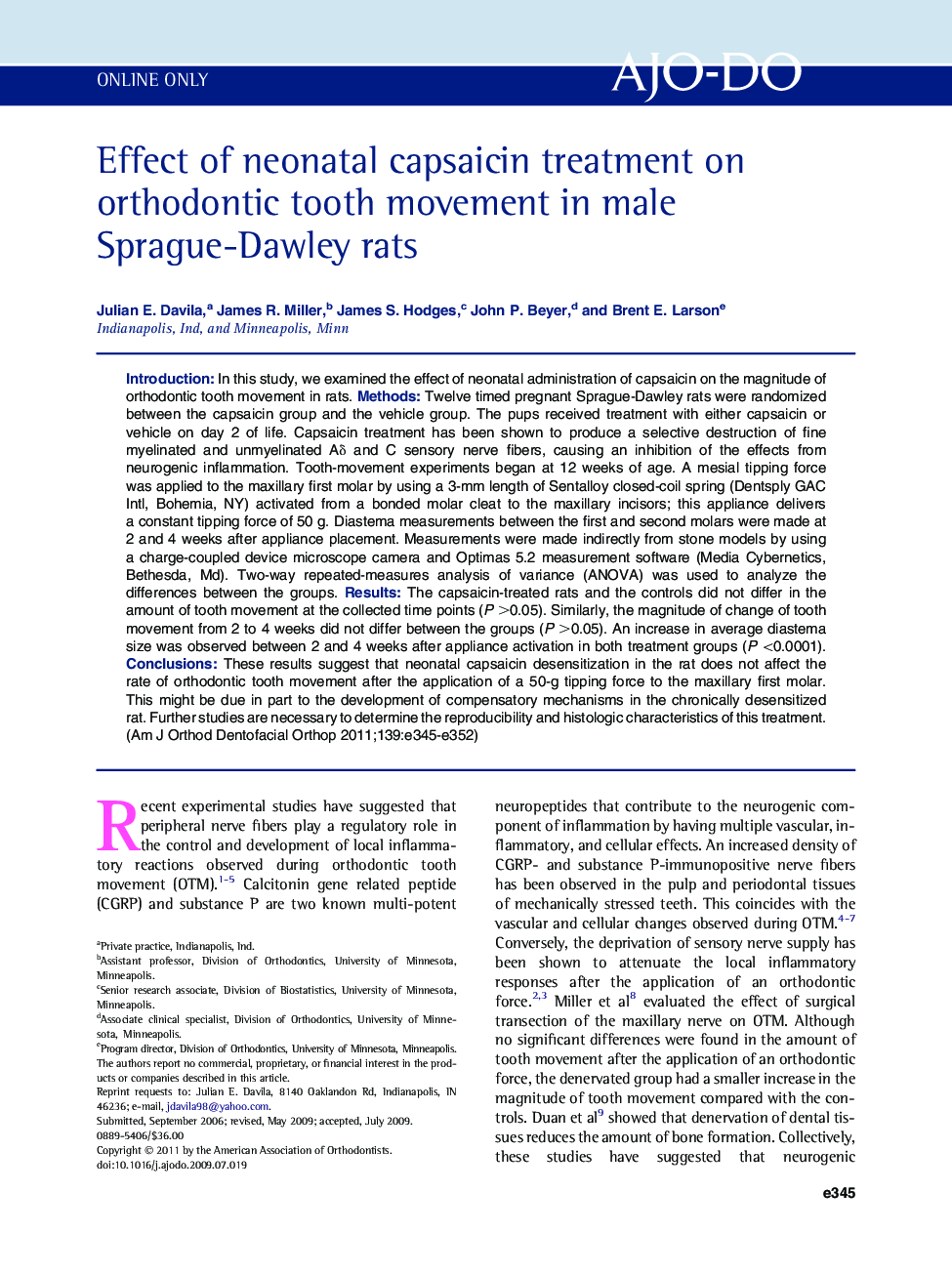| Article ID | Journal | Published Year | Pages | File Type |
|---|---|---|---|---|
| 3117696 | American Journal of Orthodontics and Dentofacial Orthopedics | 2011 | 8 Pages |
IntroductionIn this study, we examined the effect of neonatal administration of capsaicin on the magnitude of orthodontic tooth movement in rats.MethodsTwelve timed pregnant Sprague-Dawley rats were randomized between the capsaicin group and the vehicle group. The pups received treatment with either capsaicin or vehicle on day 2 of life. Capsaicin treatment has been shown to produce a selective destruction of fine myelinated and unmyelinated Aδ and C sensory nerve fibers, causing an inhibition of the effects from neurogenic inflammation. Tooth-movement experiments began at 12 weeks of age. A mesial tipping force was applied to the maxillary first molar by using a 3-mm length of Sentalloy closed-coil spring (Dentsply GAC Intl, Bohemia, NY) activated from a bonded molar cleat to the maxillary incisors; this appliance delivers a constant tipping force of 50 g. Diastema measurements between the first and second molars were made at 2 and 4 weeks after appliance placement. Measurements were made indirectly from stone models by using a charge-coupled device microscope camera and Optimas 5.2 measurement software (Media Cybernetics, Bethesda, Md). Two-way repeated-measures analysis of variance (ANOVA) was used to analyze the differences between the groups.ResultsThe capsaicin-treated rats and the controls did not differ in the amount of tooth movement at the collected time points (P >0.05). Similarly, the magnitude of change of tooth movement from 2 to 4 weeks did not differ between the groups (P >0.05). An increase in average diastema size was observed between 2 and 4 weeks after appliance activation in both treatment groups (P <0.0001).ConclusionsThese results suggest that neonatal capsaicin desensitization in the rat does not affect the rate of orthodontic tooth movement after the application of a 50-g tipping force to the maxillary first molar. This might be due in part to the development of compensatory mechanisms in the chronically desensitized rat. Further studies are necessary to determine the reproducibility and histologic characteristics of this treatment.
